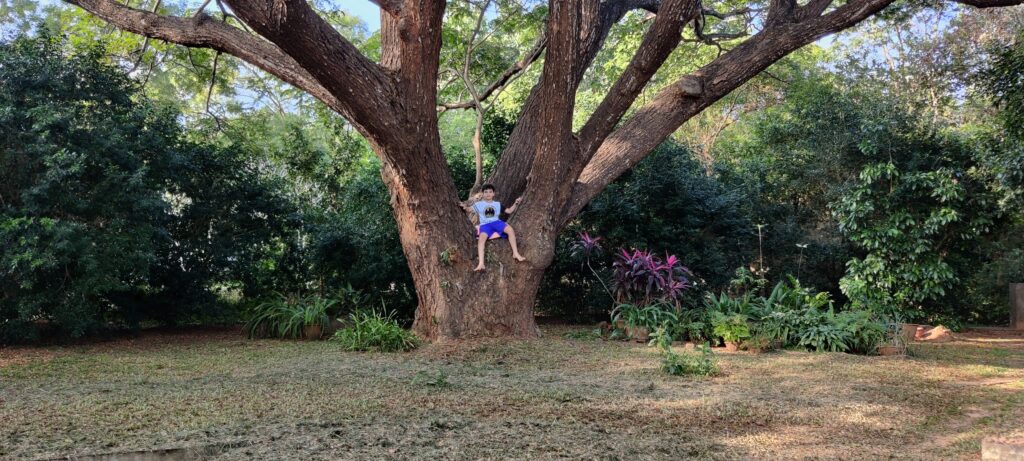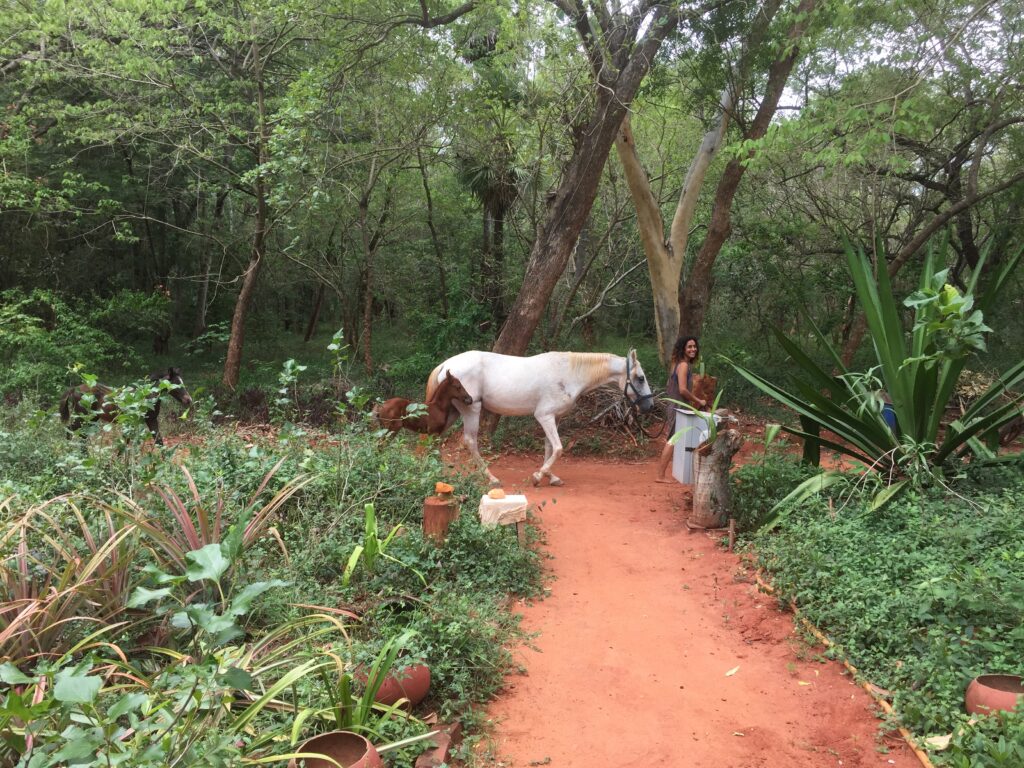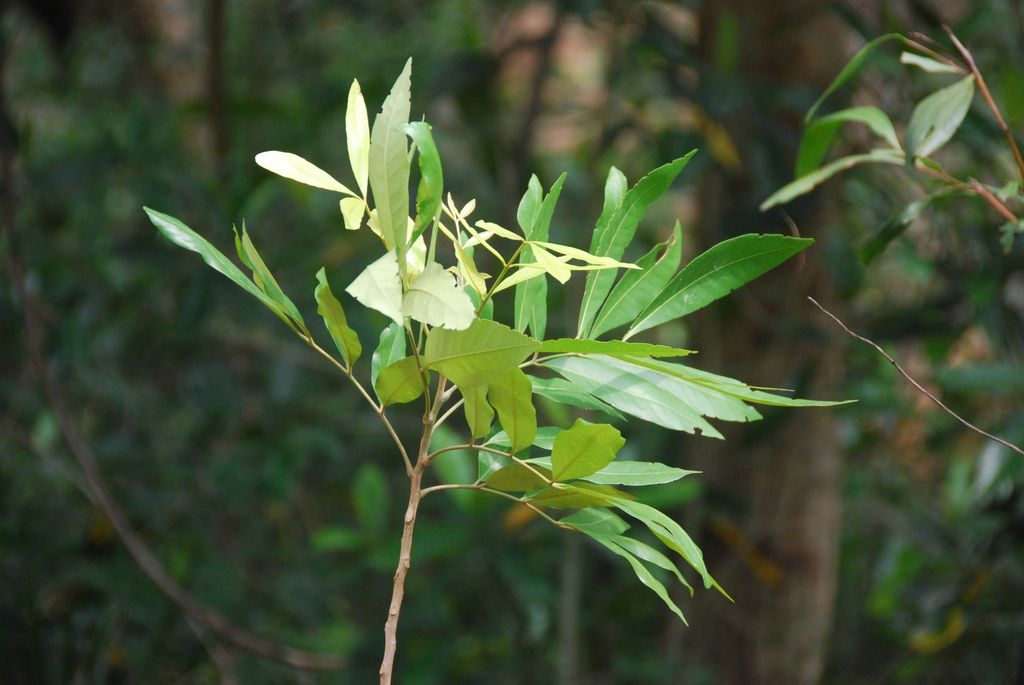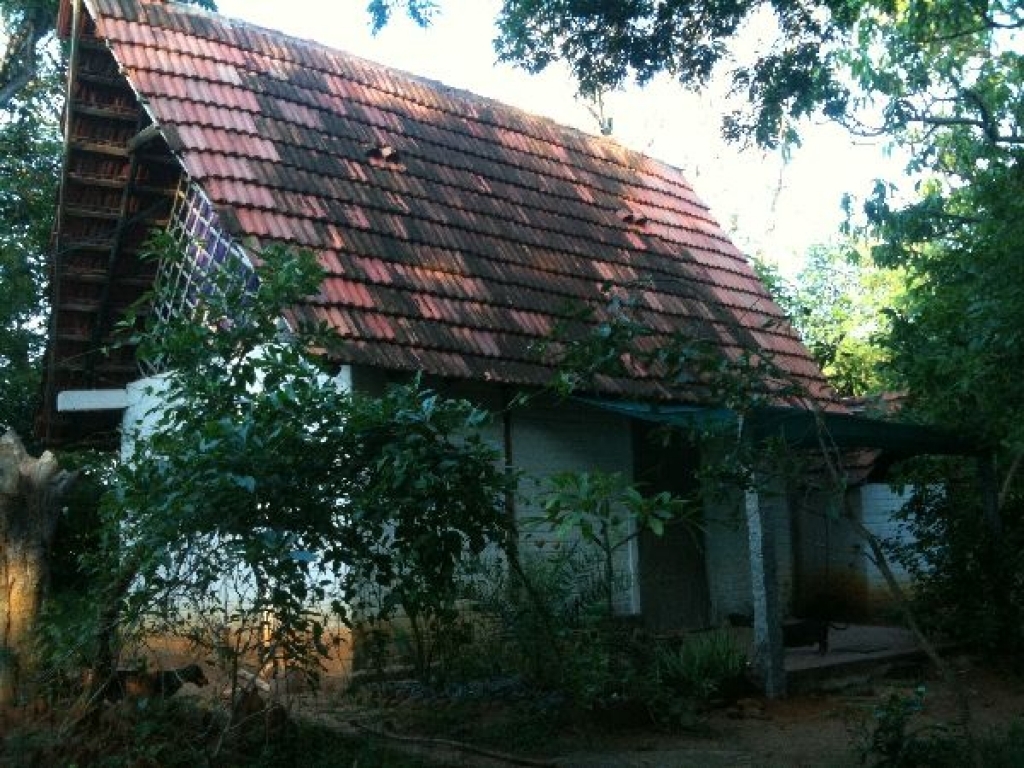Shakti Nursery and Herbarium

Rain Tree, planted in 1985, with a circumference of 218 inches and a crown span of 38 m
Shakti Nursery is part of a wider project that aims at re-creating the indigenous forest in the Green Belt area of Auroville.
Acreage: Stewards: Walter and Luk
Shakti community and its nursery started in 1983, under challenging conditions, as initially there was no water, no electricity, and no fencing. Nursery work was started from the beginning, and a few years later, thanks to funding for the conservation and propagation of Tropical Dry Evergreen Forest (TDEF), it was possible to dedicate the nursery almost exclusively to raising TDEF species. In 1999, Shakti nursery raised over 50,000 seedlings. In I981, the first issue of the ‘Auroville Index Seminum’ was published, listing all the seeds in Auroville available for exchange. The booklet was sent to the few botanical gardens known to the project at that time: just over fifty.
Twelve years later, the Auroville Index Seminum 1993, offered for exchange seeds of 470 species, in 92 families, and was sent to 405 botanical gardens, forest research institutes and arboreta spread over 64 countries. It is rather strange that the botanical garden of Novosibirsk, Siberia, asked regularly for so many seeds.
The next activity was the study of remnants of the TDEF, in collaboration with two other Aurovilians, and the setting up of the Auroville Herbarium. A herbarium is a collection of preserved plants. It is a tool for the taxonomist to study plants in terms of their medicinal or other properties, habitat, identification, correct name, etc. Criteria for the usefulness of the herbarium will be the completeness of its collection, the quality of the preserved material, and the labels, with comprehensive notes and correct names.
The aim was to build up a so-called ‘Special Herbarium’, a herbarium with a limited scope, with the main purpose of representing the TDEF with collections from the remaining pockets of that type of forest over its entire geographical distribution including the invading flora in the disturbed, degraded and denuded areas.
Collections are also required of the various plant associations on the different soils in the area of the TDEF, such as the beach, new and consolidated dunes, salt marshes, black cotton soils, and others.
Interestingly, the very first collection for the Herbarium (AURO 5001), made in April 1994, involved a plant listed in the botanical literature as “very rare, probably extinct”. It is a liana belonging to the Fabaceae family, Derris ovalifolia, found mainly in and around the Auroville plateau As the herbarium began to accept private collections from students - mostly Indian, but a few also from Europe - the AURO Herbarium got expanded to a much wider variety of species, and is growing faster than anticipated, with more than 15,000 accessions to date. (Regarding accession, if one has in the herbarium a collection of, say, 10 times the same plant, it counts as 1 species but 10 accessions.)
The broader goal now is to incorporate collections from a wider field, including the Andaman & Nicobar Islands, and other parts of India. From surveys in the Andaman and Nicobar group of islands, so far six species have been identified as new to science. To keep the plant material free from fungus and insect attacks, the humidity in the herbarium is kept at 60% and the room is fumigated twice a year. The collections are open for study by botanists and taxonomists and can be consulted by interested Aurovilians. A library can be visited during working hours.
Get in Touch
See Also



